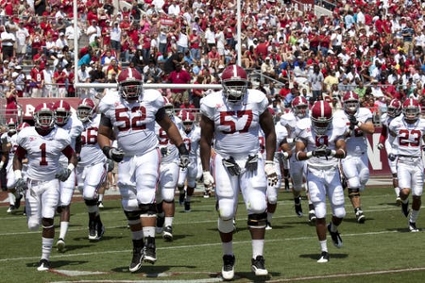I was in a dorm room debate recently that got a little out of hand, and I wanted to re-think my position a bit and get some insight from the experts. I’m not a sports fan at all. I don’t understand why colleges have sports, and what I really, really don’t understand is why we’re paying for them. When I think of the money that could go to education but instead goes to sports, it makes me mad (maybe a little too mad). Help me understand: why do colleges need sports?
You have a right to your opinion, and we’ll steer well clear of the politics here–but we will give you some context to your debate, which was clearly quite spirited!
First, some history: sports have had a place on American college campuses since the mid-1800s, and less organized versions of sporting contests took place long before that. Before there were huge crowds, big merchandising deals, and heated recruitment battles, sports were considered a part of a student’s education and betterment.
Of course, that’s still how some sports are treated on college campuses. Colleges sponsor sports that few people watch, because sports are healthy and because college campuses are a place for students to explore their interests, hobbies, and passions. These are pricey commitments for the schools, of course, though scale matters: buying a few softball bats for your slow-pitch team costs more per bat than a school would pay to outfit an entire team, top equipment vendors say.
But you seem to be talking about something else: revenue sports. Football and basketball teams sometimes get big on-campus stadiums and arenas, and those structures, commercial construction pros say, can be expensive. Then there are the scholarships, the fancy facilities designed to lure recruits, and much more.
It’s true that college spend big on big sports like football and basketball. Total sports budgets can hit $30 or $60 million for a single institution! Why do they do this? They do it in part because they feel that it helps them. If a football or basketball team is successful, ticket sales, merchandising, and money awarded by tournaments and big events can help schools turn a profit. And what a profit it can be: Texas A&M made $192.6 million in sports profits in 2016! Of course, this is part of why some observers feel that college athletes should be paid.
Teams don’t always make money for a school. Poor performances can result in years where a school’s team costs it money–and that’s particularly true for schools with less established fan bases and for football teams, which are more expensive to run than basketball teams.
But a successful team can be a big deal to a school. Experts point to the “Flutie effect,” a phenomenon named after Boston College quarterback Doug Flutie. Flutie’s miracle pass in Miami in 1984 made his school a household name, drove a huge increase in applications, and helped turn BC into a far more respected academic institution. The effect has since been observed at other schools: a deep NCAA basketball tournament run by a lesser-known school, for instance, can have a huge effect on applications the following year. And, of course, there are academic benefits for some even in down years: the athletes themselves, many of whom will not go pro, may receive scholarships.
There are many reasons to believe in college sports, and many reasons to see them as flawed. Perhaps players should be paid, and perhaps spectator sports and college should never have gone together. History has put us here, but there are still decisions to be made. Now that you have some background, you’re ready to resume your debate. Just remember to be civil!
“No one has ever drowned in sweat.” — Lou Holtz


